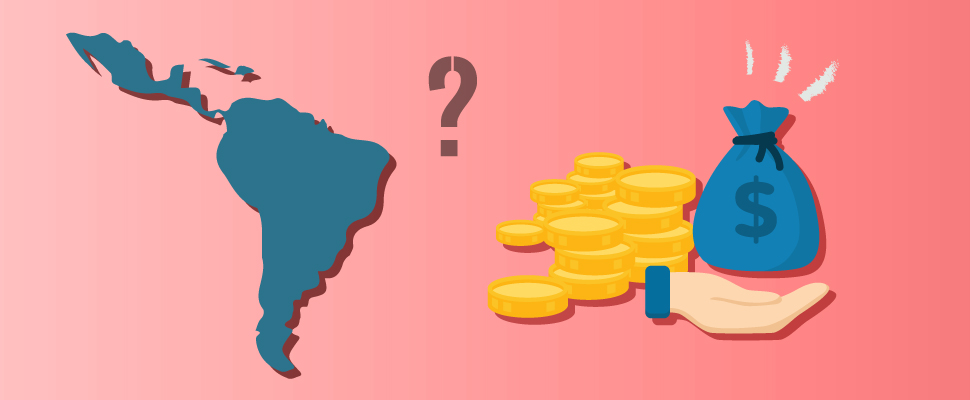Latin America: Which are the countries that have the most external debt?
In nations with fragile economies, indebtedness causes governments to spend more money than they can. Debt is the norm in Latin America

The economic growth leveraged through the acquisition of debt is perhaps one of the most used mechanisms both at the individual level and in the public or private sphere. Although, many economic analysts consider this practice as the most successful formula to acquire wealth, it is also one of the most dangerous and several. Latin American countries have proven this.
According to records published by the Economic Commission for Latin America and the Caribbean (Cepal because of its initials in Spanish), from 2009 to 2017, gross external debt in Latin America increased by almost 80%. Venezuela, Argentina, Brazil, El Salvador, and Uruguay are the nations that, according to the latest statistics compiled by the World Bank, rank as the top five with the highest fiscal debt.
In order to determine the fiscal debt, the specialists in finance take as a relation the public debt of a State and compare it with the size of its economy, which is quantified as Gross Domestic Product (GDP).
In the case of Venezuela (the most indebted country in Latin America), its fiscal debt reaches 80.9% in relation to its GDP. Although it seems a high percentage, nations like China or the USA they have a debt that is calculated at 253% and 105% respectively, figures much higher than any of the Latin American ones but corresponding to solid economies with high capacity of indebtedness and payment.
Does the external debt affect the citizens?
In nations with fragile economies, indebtedness causes governments to spend more money than they can in paying interest on the debt. In some circumstances, highly indebted countries try to mitigate their economic commitments by selling the debt to the private sector, asking for credits from organizations such as the International Monetary Fund (IMF), or even printing money.
This last option was the one used by Venezuela and caused the inflationary shoot that IMF calculations project in 1.000.000% for this year. Inflation is perhaps the factor that most affects citizens when the external debt exceeds the thresholds allowed for a State. Venezuela is proof of this and its nationals have proven it by having to pay up to 14 million bolivars for a two-kilogram chicken.
It may also interest you: Latin American in figures: The problem of public spending inefficiency
Although the situation in Argentina does not resemble that of Venezuela, the recent fiscal rescue of 57,000 million dollars that the IMF had to lend to Buenos Aires, makes tremble the social security and labor and economic stability of the Argentines.
As the BBC Latin American and Caribbean World Bank chief economist Carlos Végh puts it, the indebtedness of Latin American countries is "worrisome" and their "fragility" situation in this regard can complicate the nations' economic future even though they are have not exceeded the threshold of 100% of indebtedness with respect to GDP. This would result in higher inflation, lower private investment from abroad and suspension of support from other economies or international financial entities.
This is the list of the most indebted countries in Latin America according to the World Bank:
|
country |
GDP percentage |
|
Venezuela |
80.9 |
|
Argentina |
80.0 |
|
Brazil |
78.0 |
|
The Savior |
76.3 |
|
Uruguay |
60.6 |
|
Nicaragua |
52.5 |
|
Costa Rica |
52.4 |
|
Bolivia |
51.6 |
|
Colombia |
48.1 |
|
Ecuador |
46.4 |
|
Mexico |
45.3 |
|
Honduras |
43.8 |
|
Dominican Republic |
39.8 |
|
Panama |
36.8 |
|
Peru |
26.4 |
|
Chile |
25.6 |
|
Guatemala |
23.7 |
|
Paraguay |
20.4 |
LatinAmerican Post | Krishna Jaramillo
Translated from "Latinoamérica: ¿Cuáles son los países que tienen más deuda externa?"
Listen this article





